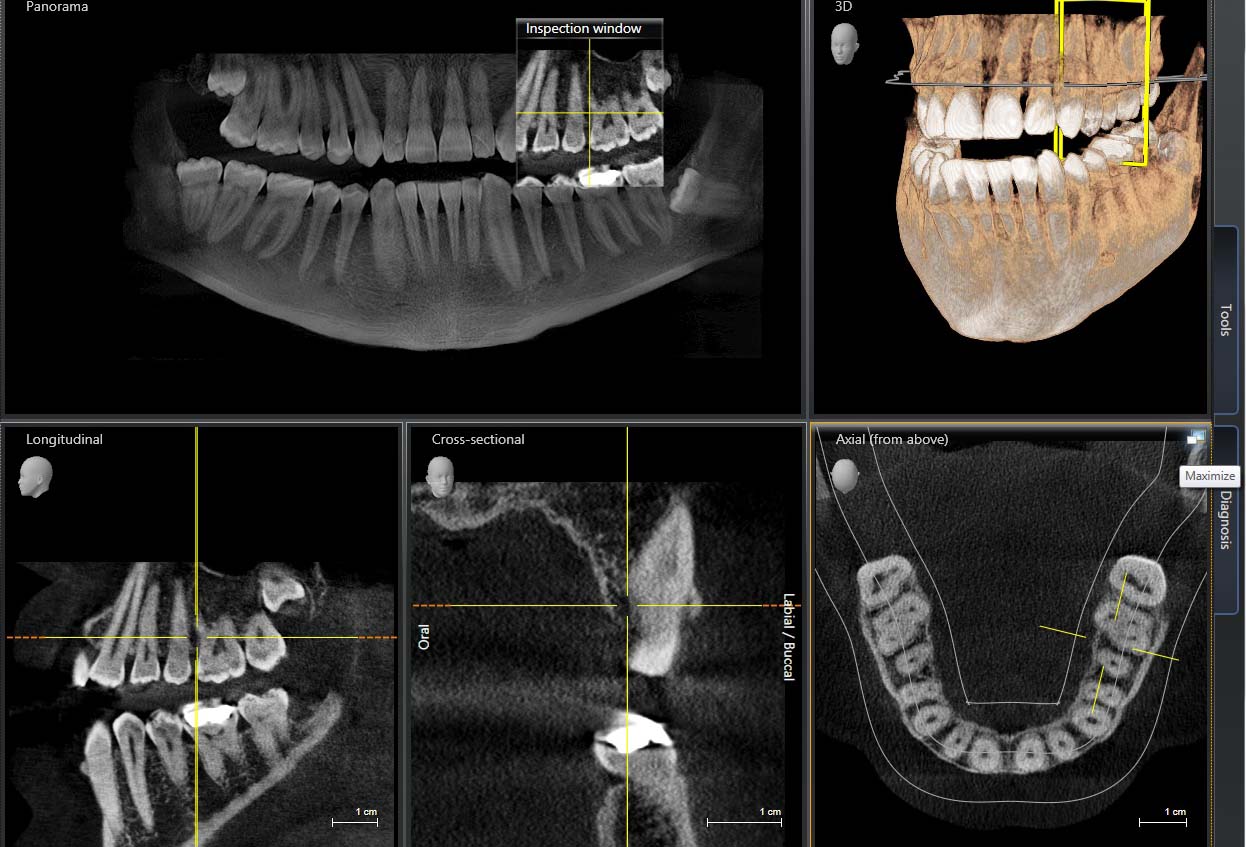Free Consulting
3D Tomography

3D Maxillofacial Tomography (3DCT)
3D jaw and tooth tomography is a modern imaging method that enables objects in the targeted area to be seen clearly with the help of X-rays. It provides images that consist of thin sections and contain volume.
What is the Difference Between Classical Dental X-rays and 3D Jaw and Dental Tomography?
The 3D technique is not a two-dimensional projection image as in classical tomography and x-ray methods, but instead a viewer that allows us information about the shape of both the outer and inner surfaces of the targeted area. The most important difference between classical dental x-ray and 3D jaw and tooth tomography is the possibility of 3D imaging. The image obtained in a traditional dental x-ray is 2 dimensional like a notebook page, so it is not possible to obtain precise and clear frames. 3D jaw and dental tomography can display the jawbone in 3D. Thus, the thickness, length and width of the jaw bones and teeth can be seen clearly. It enables images to be obtained in incisions smaller than a millimetre, so that both teeth and jawbone can be examined in detail.
How Do We Take 3D Jaw and Tooth Tomography?
Before starting 3D dental tomography, a two-way digital guide image must be taken. While the patient is in the 3D tomography device, the target region is determined in the image reflected on the screen and a 3-dimensional image of the relevant region is taken. It can be seen clearly in areas that cannot be visualized with panoramic and periapical x-rays. After a 3D dental x-ray is taken, a healthier treatment can then be planned.
In Which Situations Is 3D Jaw and Tooth Tomography Used?
3D dental x-ray is a modern imaging method used in diagnosing various dental diseases and planning treatment. Instances where 3D jaw and dental tomography are used can be listed as follows;
In order to be able to plan the implant treatment in a healthy way.
To examine whether the infections cause damage to the teeth and jaw bones.
For people who have unexplained or undetected pain in their teeth or jaw.
For people with jaw trauma or a suspected fracture.
In determining the location of canals that cannot be detected by traditional methods in root canal treatment.
For people who require bone grafts.
For people who require prosthesis planning.
In determining the position of the nerves before the surgical extraction of wisdom teeth.
In cases where surgical treatment is required.
Before tooth extraction; in determining the proximity of the teeth to the sinus and anatomical areas,
Is Radiation Excess in 3D Jaw and Dental Tomography?
Contrary to what is thought, the amount of radiation received from 3D jaw and tomography devices is much lower than standard x-rays, which only provide 2D images.


